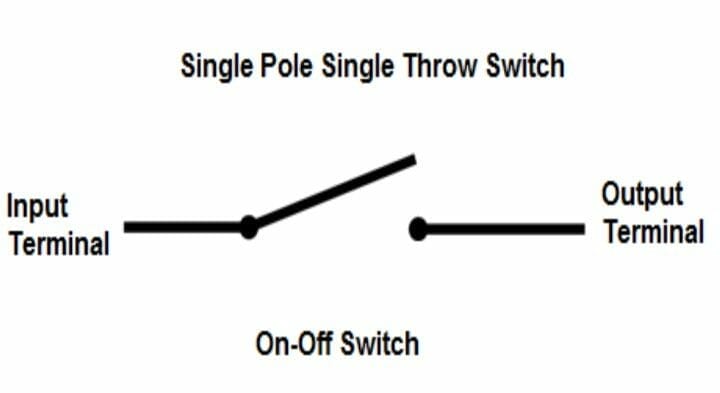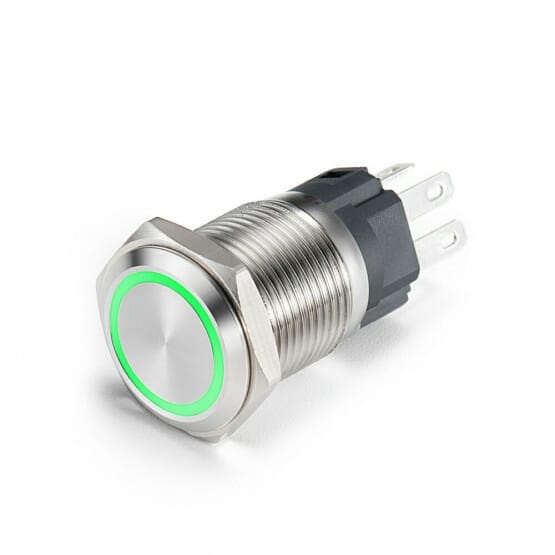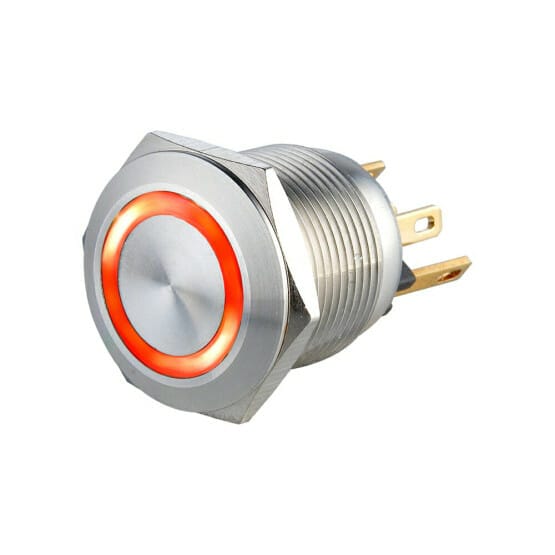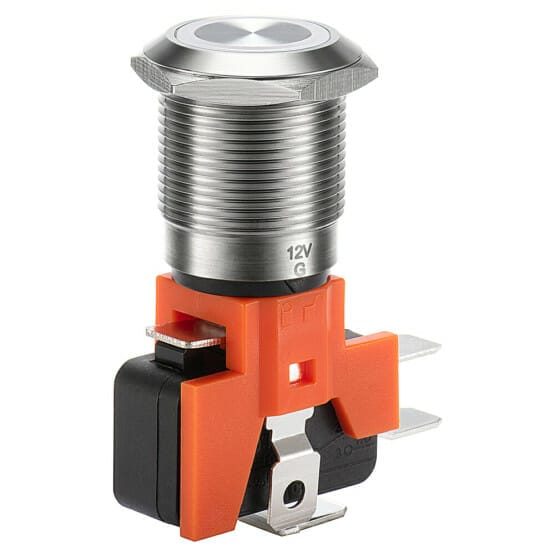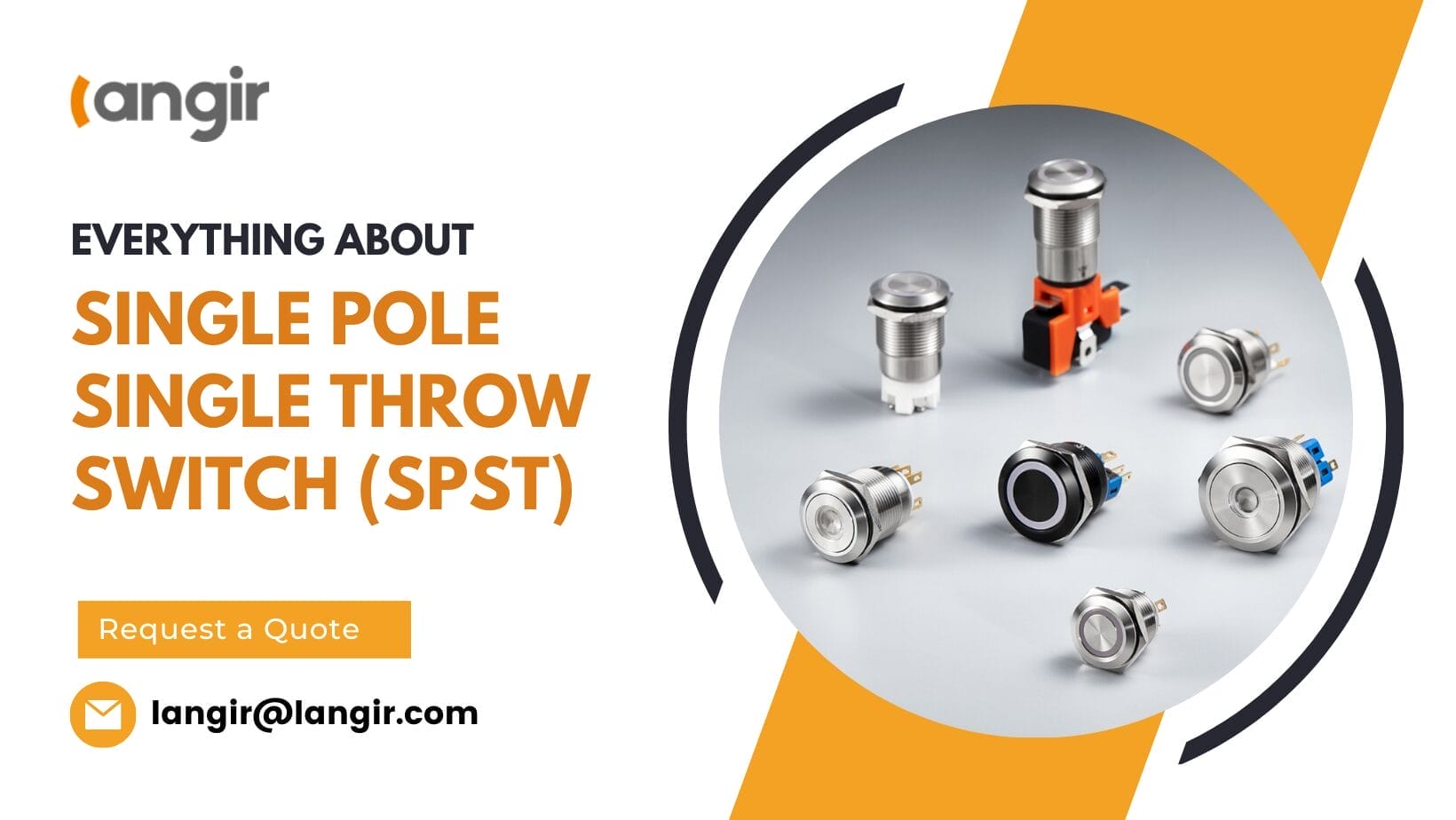
The world of electrical circuits and systems thrives on control, which is centered around switches. Switches are fundamental electrical components that control the flow of electricity within circuits. The types of switches available in the market are vast nowadays, and the Single Pole Single Throw switch is the most common one. Despite its apparent simplicity with only one pole and throw, this switch type is important in various electrical applications.
Understanding SPST switches, their working, and construction is essential if you are working with electrical systems or tackling basic DIY projects. To help you in this regard, this article is going to discuss the Single Pole Single Throw Switch in detail, along with its working, applications, and best options available. Continue reading!
What is a Single Pole Single Throw (SPST) Switch?
It’s a fundamental electrical component consisting of a single input (referred to as the “pole”) and a single output (known as the “throw”). It works just like other electrical switches and controls the flow of electricity within circuits. The SPST is an on-and-off switch: when in the “on” position, it allows electrical current to pass through it, activating the circuit.
On the other hand, at the “off” position, it disrupts the current flow, breaking the circuit. The simplicity of SPST switches makes them ideal for various applications, from household devices like lamps to industrial machinery, where basic control is necessary. Here’s the picture showing the one input and one output terminal of an SPST switch:
Construction of Single Pole Single Throw Switch
The construction of a Single Pole Single Throw (SPST) switch typically consists of the following key components:
The pole is the central part of the switch where the electrical current enters. In an SPST switch, there is only one pole, meaning there is a single connection point for the incoming current.
The throw or connection point is the part of the switch where the electrical current exits. In an SPST switch, there is one throw, representing a single output connection.
The actuator produces a motion and helps you physically control the switch by converting energy and signals going into the system. Depending on the design of the SPST switch, it can be a toggle, rocker, push-button, or any other type.
Inside the switch, metal contacts connect and disconnect to control the flow of electricity. When the switch is in the “on” position, these contacts are closed, allowing current to flow. When in the “off” position, the contacts open, breaking the electrical circuit.
Working of a Single Pole Single Throw Switch
Now, let’s have a look at the working of the SPST switch to understand it better:
The Single Pole Single Throw Switch has a one-way functioning and simply turns the circuit on and off. When you turn on the switch, the contacts within it come together and establish an electrical connection. This closure of the contacts allows the flow of current within the circuit, activating the connected device or circuit.
Conversely, when the switch is turned off, the contacts separate, breaking the electrical connection and deactivating the connected device or circuit. Take the example of a light switch in your room with SPST functionality. The circuit closes once you turn the switch on, allowing current flow, and the bulb glows. Opposite to this, when you turn off the switch, the circuit opens, breaking the current flow and turning off the bulb.
Types of Single Pole Single Throw Switch
Here are the types of SPST switches you must know:
Types by Relay Functioning
The following are the types of Single Pole Single Throw Switch as per the internal functioning:
Single Pole Single Throw NC switch is normally closed, meaning that when the switch is at rest or not actuated, it allows electrical current to flow through it. Pressing or actuating the switch opens the circuit, interrupting the flow of electricity. SPST NC switches are often used in safety systems where an open circuit indicates normal operation, and any interruption (when the switch is actuated) triggers an alarm or safety mechanism.
An SPST NO switch, on the other hand, is normally in an open position, meaning that when it’s at rest, it does not allow electrical current to flow through it. By pressing or actuating this switch, you close the circuit, allowing electricity to flow. SPST NO switches are common in everyday applications, like vending machines, where pressing a button or flipping a switch turns on a device or light.
Types by Design
Here are the common types of SPST switches depending on the design:
A Toggle SPST switch is a type of single pole single throw switch known for its toggle or lever-like actuator. It offers two distinct positions: ON and OFF. When you toggle it to the ON position, the switch establishes a continuous electrical connection, completing the circuit. Notably, the toggle switch remains in the position you set until you manually flip it back to the OFF position, providing a stable, latched operation.
Next, we have the momentary push single pole single throw switch, often known as a push-button switch, which operates differently. This Single Pole Single Throw switch has no locking ON or OFF position. Instead, it functions as long as you hold or push the button.
The electrical connection is only active while you apply pressure or keep the button pressed. As soon as you release the controller, the momentary switch promptly returns to its default OFF state, making it ideal for applications that require momentary or temporary electrical connections.
Best Single Pole Single Throw Switch Options
Now, let’s explore some of the best Single Pole Single Throw Switch options that you can pick for various settings!
L16T Anti-Vandal LED Push Button Switch
The L16T Anti-Vandal LED Push Button Switch is a rugged and dependable option designed to withstand harsh conditions. The high durability makes it suitable for a wide range of industries, providing a reliable solution for your needs. It’s ideal for controlling access in elevators, emergency buttons, parking systems, and more. Furthermore, it’s available in various styles, making it easy to fit this switch into different control panel designs.
L19M Micro-Trip Anti-Vandal Switch
The next one is the L19M Micro-Trip Anti-Vandal Switch, a compact and responsive switch designed with precision. This switch uses a specific stroke and force to activate, ensuring quick and reliable action. Encased in a shell with an external driving rod, it’s often referred to as a micro switch or sensitive switch due to its small contact distance. The L19M Micro-Trip Anti-Vandal Switch is a favored choice for various applications, like kiosks, ticket dispensers, and industrial setups where accuracy and responsiveness are crucial.
L19B High Current Anti-Vandal Switch
Lastly, we have the L19B High Current Anti-Vandal Switch by Langir – a robust and reliable solution. These switches are built to thrive in extreme conditions, providing superior performance with an impressive IP-rating – IP68. Featuring precision and the highest quality manufacturing standards, they are suitable for demanding conditions.
L19B switches come in various configurations, including different bushing diameters, actuator shapes, and materials, ensuring durability and adaptability. It doesn’t matter if you need an illuminated or non-illuminated switch; you can rely on them in any situation.
Advantages of Single Pole Single Throw Switch
Some of the fantastic advantages that make an SPST Switch a must for many things are:
SPST switches are among the most cost-effective switch options available. Their simplicity of design and ease of manufacturing contribute to their affordability, making them suitable for a wide range of budget-conscious applications.
Due to their basic design, wiring an SPST switch is uncomplicated. There are fewer connections to make, reducing the chances of wiring mistakes. This simplicity is especially advantageous in DIY projects and quick installations.
SPST switches are known for their straightforward circuit design. They have only one pole and throw, simplifying the design process and making them ideal for basic control applications.
SPST switches can handle high voltages and currents, making them versatile in various industrial and commercial applications.
Disadvantages of Single Pole Single Throw Switch
Here are the disadvantages of a Single Pole Single Throw Switch:
Over an extended period of use, the labels or markings on SPST switches can gradually wear off. This makes it increasingly difficult to determine the switch’s state or function, potentially leading to confusion and operational errors.
In rugged or demanding environments, such as exposure to harsh conditions, SPST switches may not always exhibit the same level of durability as more robust switch types.
Applications of Single Pole Single Throw Switch
Single Pole Single Throw (SPST) switches find numerous applications in various electrical and electronic systems due to their simple ON/OFF control. Here are a few typical applications:
- Light Switches: SPST switches are often used as light switches in homes and buildings. They allow users to turn lights on or off with a simple flick of the switch.
- Doorbell Buttons: Doorbell switches are typically SPST momentary push-button switches. They complete the circuit when pressed, generating a doorbell chime or alert.
- Automotive Switches: SPST switches can be found in cars, serving various functions like turning on headlights, fog lights, or interior cabin lights.
- Security Systems: SPST switches are used in security systems as tamper switches. When doors or windows are opened, these switches trigger an alarm by breaking the circuit.
FAQs
What is a single pole double throw switch?
A Single Pole Double Throw (SPDT) switch is an electrical switch with one input (pole) and two possible outputs (throws). The ability of this switch to connect the input to either of the two outputs makes it a versatile switch for toggling between two different circuits. SPDT switches are commonly used in applications where a choice between two options needs to be made.
Why is a switch called a single pole switch?
A switch is called a “Single Pole” because it has only one input or connection point, the pole. This single connection point is where electrical current enters the switch, allowing it to control the flow of electricity in a circuit.
What is the principle of a switch?
The working principle is simple – to control the flow of electricity within an electrical circuit. It achieves this by initiating a mechanism to complete or interrupt the circuit. If the switch is in the “on” position, it closes the circuit, allowing electricity to flow. In the “off” position, it opens the circuit, breaking the flow of electricity. This simple principle underlies the operation of all types of switches, from basic toggle switches to complex electronic switches.
What are the two common types of switches?
Electrical and mechanical are the two common types of switches. Electrical switches control the flow of electricity within a circuit and work under the influence of semiconductors. Bipolar transistors, power diodes, etc., are some common examples. Mechanical switches, on the other hand, use physical mechanisms like levers or buttons to open or close the circuit, like SPST, SPDT, and more.
What is the difference between SPST and SPDT switches?
The critical difference between SPST (Single Pole Single Throw) and SPDT (Single Pole Double Throw) switches lies in their functionality. An SPST switch has one input (pole) and one output (throw), making it a simple on/off switch. In contrast, an SPDT switch has one input and two outputs, allowing it to toggle between two different circuits or functions.
Conclusion
The Single Pole Single Throw (SPST) switch, while seemingly simple, is an indispensable component in the world of electrical control. Its straightforward on/off operation, minimal wiring requirements, and cost-effectiveness make it a ubiquitous choice in countless applications. Whether illuminating a room, powering devices, or managing industrial systems, the SPST switch is reliable.
Its versatility continues to play a foundational role in the intricate realm of electrical circuits and systems. And if you need some of the best Single Pole Single Throw Switch options, Langir is your one-stop shop. All our products are exceptional and built to last long in challenging weather conditions. Then what are you waiting for? Get in touch and grab your favorite SPST switches from us now!
Send your inquiry now
All Langier News:
Read Moreelectronica 2024 Hall-Stand No.: A2 160 November 12-15, 2024 Tr...

 English
English 简体中文
简体中文